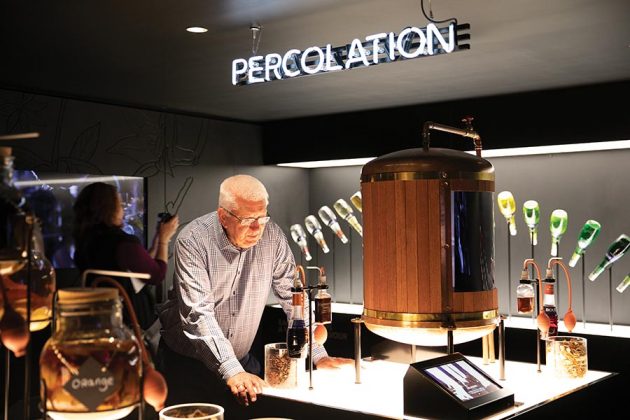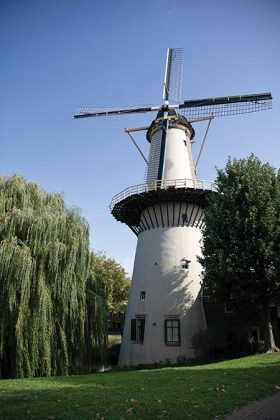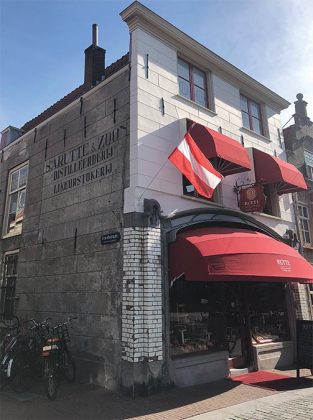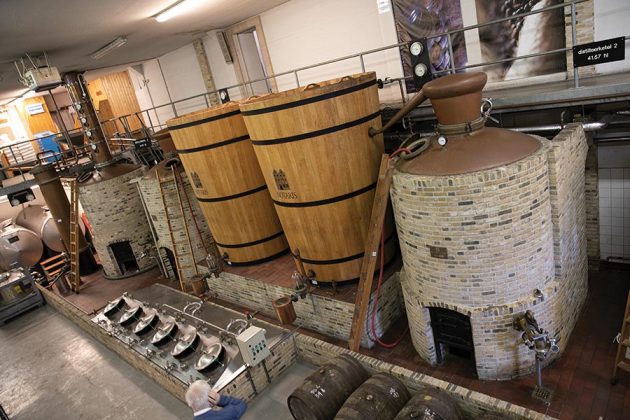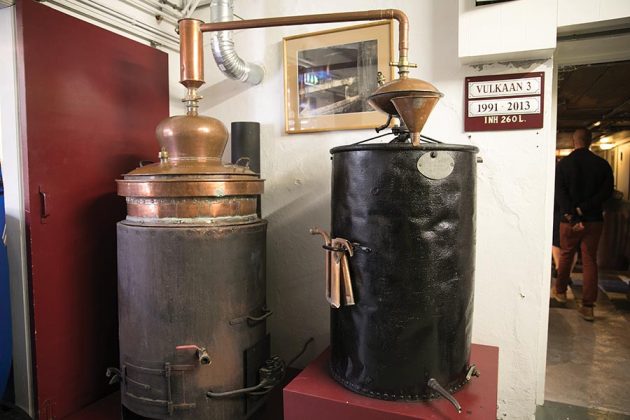It was 2008 when Lucas Bols came to the States and made a big splash in cities like San Francisco and New York. The legendary genever/jenever (pronounced juh-NEE-vuhr) has been produced since 1575, the world’s oldest distilled spirits brand. Most spirits aficionados know genever birthed gin. In the 1700s, London dry gin evolved from genever, the original botanical spirit.
With its malt grain base, however, genever is a meeting ground of whisk(e)y and gin. It’s neither, both and more than all at the same time. Over a decade ago, genever drinks were found all over my home city of San Francisco. I tasted (and wrote about) exceptional, creative drinks that showcased the spirit in SF and NYC. Eventually genever slowly started fading from cocktail menus, never mainstreaming internationally as spirits like mezcal had.
Why is genever still so widely misunderstood? Why did it fade off menus in key cocktail cities and never really catch on elsewhere? I believe one reason is many of the bartenders and consumers who got hooked on Bols’s excellent product saw it as a brand, not a category. They loved the malty botanical profile but didn’t experience all the angles of genever.
In following years, few other genever brands were exported to the rest of the world. But US producers rolled out genever-style products, with one of the early adopters being the ever-pioneering Hotaling & Co. (formerly Anchor Distilling) with their Genevieve “genever-style gin.” This sparked controversy, as genever distilleries in the spirit’s home countries often do not believe genever should be produced outside of Europe (more on that later).
Despite not being able to call genever genever — “genever-style gin” is the approved TTB label categorization — numerous US producers like Corsair, Aviation Gin and FEW Spirits crafted genever-inspired spirits with a grain/malt base and botanicals. Though small-batch distillers around the country tried their hand at genever-style spirits, the numbers were still small, not enough groundswell to school the general public on genever’s unique possibilities.
In 2013, I visited Amsterdam with Bols for their huge Bols Around the World bartender competition, seeing their 1969 plant and the museum-like section of the original 1500s distillery packed with artifacts like antique genever clay bottles, distilling equipment and the striking Bols family Bible from 1660. With gloves, I was able to look through a handwritten book on distillation from 1572. I gained a deeper love and knowledge for genever on this trip, as I also got hooked on korenwijn/korenwyn, or “grain wine,” the maltiest end of the spectrum, tasting like a very robust, grain-forward genever.
That same year, the first Belgian genever to be imported to the US, Diep 9, arrived via Belgium native Véronique Van Acker-Beittel, who moved to San Francisco and founded Flemish Lion LLC. She also wrote the illuminating book, Genever: 500 Years of History in a Bottle, clarifying Belgium’s crucial genever history and how much of it was stamped out during the country’s 66-year ban on the sale of hard liquor in bars from 1919 until 1985 (which, incidentally gave rise to high-ABV Belgian beers to fill in the gap). The Netherlands escaped this prohibition, thus preserving their genever history.
Genever’s complicated history became clearer as I understood its deep Belgian roots. But as someone who spends their life studying origins and variations of food and drink — and judging all categories of spirits, including genever — it still remained elusive compared to most other spirits categories.
It wasn’t until recent months, when I returned to the Netherlands with SpiritsNL’s “Genever: America’s Lost European Spirit” campaign that I dug deeper into genever’s breadth and scope. The group campaigned at events like BevCon in Los Angeles in August 2018, where I tasted through exciting new- and old-style genevers about to be imported to the States. Finally, a more fleshed-out category. Funded by five genever brands (Bobby’s-Notaris, Bols, DeBorgen, Rutte, Smeets) and the European Union (EU), the campaign highlights genever from jonge or young, new-style — this style’s growth mirroring the global renaissance of gin — to bolder, more malty genevers Bols had popularized in the States over a decade ago.
During my hands-on journey to genever distilleries across the small, lovely country of the Netherlands, the spirit came into more vivid focus. First of all, the basics: genever is typically a combination of a grain-based (any grain is admissible) and malt spirit with juniper berries and botanicals like angelica root or coriander. Secondly, since 2008, the EU established that to be called genever, the spirit must be produced in “countries of origin,” namely the Netherlands, Belgium, the Nord and Pas-de-Calais areas of France or the North Rhine-Westphalia and Lower Saxony regions of Germany. Genever-style spirits are made the world over, but these historic regions are the ones that can be officially called genever.
To understand the category better, here is a breakdown of the four key styles:
1. Jonge or young, new-style genever. This does not mean young in age, as it is unaged. What it typically refers to is that in addition to neutral grain base, there could be up to (but no more than) 15% malt spirit, a minimum ABV of 35% and maximum sugar of 10 grams per liter. This is often the most gin-like genever: juniper-forward, bright and clear.
2. Old or oude-style genever. This style contains 15 to 50% malt spirit, a minimum ABV of 35% and maximum sugar of 20 grams per liter. Caramel color is allowed per law and whether from coloring or barrel age, oude is typically light yellow or brown. While botanicals can often still dominate on the palate in this style, malt should definitely be present.
3. Malt genever/korenwijn/korenwyn is a minimum of 51% malt spirit, a minimum ABV of 38% and maximum sugar of 20 grams per liter. Caramel color is allowed and whether from coloring or barrel age is typically light yellow or brown. This style also does not have to be aged but if it is, it must be a minimum of 1 year. Juniper should be discernible on the palate, but by this point, malt begins to dominate.
4. 100% malt genever is 100% malt with no neutral grain spirit, a minimum ABV of 35% and maximum sugar of 20 grams per liter. Coloring is still light and juniper should still be discernible on the palate but this will be the maltiest and most whiskey-like of the styles.
Genever’s flavor profiles move from fresh, clear, young, botanical-driven or gin-esque to bold, malty, rich, earthy. Digging into American cocktail books from the late 1800s, one finds a good quarter of the cocktail recipes often feature genever. But post-Prohibition, that had all but disappeared.
My visits to these five distilleries around the Netherlands — and one in Belgium — illuminated genever’s styles and experimentation capabilities.
DeBorgen is one of the brands produced at Hooghoudt Distillery in Groningen, the largest city in northern Netherlands. A fourth-generation family-owned distillery, Hooghoudt was founded in 1888, creating DeBorgen as the ideal cocktail genever in historic cocktail classics like the Martinez. Their genevers combine pot-distilled malt wine and neutral column-distilled spirit, resulting in a young/jonge-style, more botanical-forward genever, including oranjeappel, a bitter orange that comes from the Caribbean (note: you often won’t find citrus as a classic genever botanical but will more so in these new-style genevers).
I love DeBorgen’s old-style genever, made in the 17th- and 18th-century styles with more malt spirit, some of it aged in oak up to 17 years. Here, both juniper and a rich woodiness shine. Their malt genever uses only pot-distilled malt spirit and botanicals like juniper, caraway, sweet woodruff and fennel. Finished in former oloroso sherry casks, it’s a unique genever, especially their spectacular 21-year-aged malt spirit, a highlight of the dozens of genevers I tasted across the country. Using local Netherlands juniper, experimenting with casks and the old style’s striking golden-copper bottle make DeBorgen special. Their team is smart, warm and passionate about what they do.
On to Schiedam, Netherlands, which historically was the genever distilling capital of the world: In the late 1800s, the small, windmill-lined town was home to over 400 distilleries. Here, The House of Herman Jansen (http://houseofhermanjansen.com/) charmed me with its family history going back to 1777, its historic old house/offices next to an industrial distillery and windmills where they still grind their grain. Spending the day with the wonderful Dick and wife Marjan Jansen felt familial immediately. They produce their own brands and do contract distilling for others. Notaris has been their best-known genever since the 1980s, imported to the US by Preiss Imports. Their unique strengths are aged genevers and stunning single-cask vintages, which we tasted back to 30 years, showcasing the beauty of aged genevers we’ve yet to get access to in most of the world.
Another special aspect of Herman Jansen is their forward-thinking partnership with young distiller Sebastiaan Alfons. His Indonesian-born grandfather, Jacobus Alfons — nicknamed Bobby — immigrated to the Netherlands and fell in love with Dutch genever, but missed Indonesia’s spices and herbs. He created his own home blend, steeping Indonesian botanicals in genever. Sebastiaan found a bottle of this in 2012 at his grandmother’s house and was hooked. After two years developing and refining the recipe, Sebastiaan brought it to the Jansens, who were interested in producing Bobby’s Schiedam Dry Gin, launched in 2016. Bobby’s came to the States in 2018 and besides its standout, modern packaging in an emerald-green bottle marked by an Indonesian zigzag pattern, this is the perfect example of a new-style, jonge genever. Using only 4% malt spirit and five botanicals (juniper, cardamom, lemongrass, ginger, cubeb pepper), it’s more gin-like, crisp and gorgeous in gin-style cocktails but with a whisper of malt to give it that genever character.
In the charming harbor town of Dordrecht, Rutte (https://www.rutte.com) was founded by Simon Rutte in 1872 when he purchased a cafe-eventually-turned-liquor-shop, building a distillery on-site. The atmospheric, Art Nouveau-style space remains tiny and intoxicatingly historic. Gracious and savvy, master distiller Myriam Hendrickx has taken the brand to new heights since coming on board in 2003. Following in the footsteps of founder Simon who had access to exotic herbs and spices from the Dutch East Indies, she created the popular Rutte Celery Gin and experiments with a range of styles both traditional and rare, like single oat genever, Paradyswyn genever (using botanicals like apple, raspberry, cherry, juniper, coriander), koornwyn, sloe gin and barrel-aged genever. Their “Old Simon” tributes Simon as a genever distilled with the diversity of botanicals Rutte has long been known for: roasted walnuts and hazelnuts, coriander, angelica, mace, licorice, carob. Myriam continues to experiment in the cozy space with all manner of botanicals, like black currant or ever difficult-to-distill cinnamon. Truly small batch, Rutte’s infusion experimentations are one of its greatest strengths.
As previously explained, Bols Genever was for many of us our first introduction to genever, a mission Bols continues to take to the masses with their House of Bols Genever Experience museum in Amsterdam and with Europe’s largest bartending school, Bols Bartending Academy. Bols is a huge brand and, thankfully, high quality. Its incomparable master distiller Piet van Leijenhorst is the granddad and father of the current generation of genever distillers. To meet him is to love him. Bols is the master of the aged genever, 100% malt wine and korenwyn side of the genever world. Malt-forward, bracing and bold, their genevers appeal to whisk(e)y drinkers and stand up strong in cocktails vs. getting lost as some of the softer 35% ABV genevers might. Their base is fermented corn, rye and wheat, with the wheat and corn triple-distilled in copper pot stills, blended with juniper and other botanical distillates. They built a small city still in Amsterdam since my 2013 visit, as being large production, they are mostly distilled elsewhere.
Smeets, located in northeast Belgium, was the one Belgian genever distillery I spent some time with this trip, though I mentioned Diep 9 and Belgian genever history earlier. The EU has designated 11 AOC genever regions, four of them in Belgium. Created by Gerard Smeets in the 1920s, Smeets has an interesting history starting with house blends Gerard sold in his liquor shop to opening as a distillery in 1947, producing over 50 brands, growing to the large company it is today. Their style of genever, Hasseltse Jenever (in 1830, the small city of Hasselt was home to an impressive 25 distilleries), gained AOC status in 2008. In 2001, Smeets was sold to Konings, then to East Flemish distillery Bruggeman in 2011. On the lighter ABV (35%) side, Smeets genevers play easy-drinking, dry and aromatic, workable in cocktails. They also experiment with casks rarely seen in aging genever, like Port and rhum agricole barrels.
These are a few of the genever distillers across Europe, but these five have teamed up to show the world genever’s range, its complexity for aging, its cocktail capabilities to please different palates. For small-batch distillers everywhere, the possibilities in this category have been touched on by just a few.
Over a magical genever-pairing dinner at Juniper & Ivy in an Amsterdam high-rise, our communal table of distillers, blenders and genever industry from Netherlands and Belgium got into a rousing discussion about how genever should not be made anywhere but the EU’s designated AOCs. I posited that more international producers of the product — as with spirits like aquavit or fernet — might just bring greater international understanding (and broader sales) of the category, even though there were bound to be bad iterations from time to time. But the majority of locals were friendly yet adamant about the need to protect genever from being produced elsewhere than the countries of origin.
This surely would raise the hackles of any entrepreneurial distiller looking to experiment with lesser-known spirits or true genever lovers who want to produce their own version, not to mention the many who already do. Regardless of what the answer is, if there is one, genever is ready to make a deeper imprint as a category in the mind of bartenders and thus, eventually, the consumer. It’s ready to show its long historic range and possibility to the world. Genever’s time has come.

